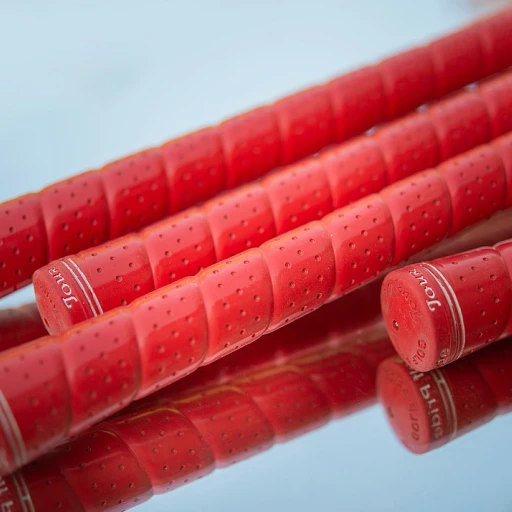
Understanding the Role of Bunker Sand in Golf
The Importance of Sand in Golf Course Design
When it comes to luxury golf courses, the choice of bunker sand is more than just a matter of aesthetics. The sand plays a crucial role in the overall playing conditions, affecting both the visual appeal and the performance of the course. Bunkers, often referred to as sand traps, are strategically placed to challenge golfers and enhance the course's design. The type of sand used can significantly influence the difficulty and enjoyment of the game.
Visual Appeal and Aesthetic Considerations
The color and texture of bunker sand can transform the look of a golf course. White sands are often preferred for their pristine appearance, contrasting beautifully with the green of the fairways. However, some courses opt for brown or gold sands to blend with the natural landscape. The choice of color can reflect the unique character of a course, making it stand out among other country clubs.
Functional Aspects of Bunker Sands
Beyond aesthetics, the quality of bunker sand impacts the playability of the course. High-quality sands are characterized by their particle size and shape. Angular particles are preferred as they provide better stability and prevent golfers from sinking too deeply. The infiltration rate, or how quickly water drains through the sand, is another critical factor. Sands with a high infiltration rate help maintain optimal playing conditions, even after heavy rain.
For those interested in mastering the art of luxury bunkers, understanding the secrets of the pros can provide valuable insights. Explore more about bunker mastery to enhance your course's appeal and functionality.
Characteristics of High-Quality Bunker Sand
Attributes that Define Top-Tier Bunker Sand
Understanding the nuances of high-quality bunker sand is essential for maintaining the aesthetic and functional standards of a luxury golf course. Several key attributes serve as markers of excellence.- Color and Consistency: Bunker sand should exhibit a uniform color, whether it's the classic white of silica sand or a subtle mix of brown and gold tones. Consistency in color enhances the visual appeal of course bunkers, providing a striking contrast against the green landscape.
- Particle Size and Shape: The particle size of sand plays a significant role in its performance. A blend of fine and angular particles ensures optimal playability. Angular particles improve the infiltration rate of water, maintaining the required firmness and preventing the bunker from becoming too compact. This trait is vital for supporting the ball and club interaction during play.
- Purity of Materials: Choosing bunker sands with minimal silt and clay content is crucial. High-quality sands possess a limited amount of these materials, offering better drainage and reducing mud formation, which can hinder playing conditions.
- Durability and Composition: Durable sands withstand the elements without deteriorating rapidly, ensuring longevity and minimized maintenance efforts. A golf course requires top-grade sand, often with a blend equivalent to finely crushed glass, providing a harmonious balance between function and luxury.
The Impact of Bunker Sand on Game Performance
The Influence of Bunker Sand on Performance
When it comes to playing golf at an elite level, the quality of bunker sand can truly make a difference. In golf courses around the world, sand bunkers serve as formidable challenges to even the most seasoned golfers. The type of sand utilized in these course bunkers plays a significant role in how the game unfolds. The particle size and particle shape of the sand heavily influence the consistency of the bunkers. Sands with more angular particles often provide better drainage and reduce compaction, enhancing the playing conditions. Angular sands typically allow for better infiltration rates, often reported in inches per hour, making them preferable for maintaining pristine conditions in varying weather. The white or brown color of the sand can also subtly affect the golfer's perception, potentially influencing their approach and confidence. Higher quality sands such as silica sand have minimal impurities, offering a consistency that golfers can rely on. Moreover, the sand's interaction with water greatly impacts the club’s control over shots, especially in relation to how much the sand clings to the ball. Course sand that contains a balanced mix of silt clay and gravel can be optimal for maintaining the structural stability of the bunkers while also ensuring that the sands compact appropriately to provide consistent resistance. This, in turn, influences how well players can predict ball movement and apply appropriate techniques. For those interested in further elevating their game, expertise in choosing the right bunker sand can be expanded through exploration of the ultimate putting green cutter. This resource aids in understanding how playing conditions can be optimized with the right materials.Selecting the Right Bunker Sand for Your Course
Prioritizing Performance and Aesthetic Appeal
Choosing the right bunker sand is both an art and a science, requiring a careful balance of factors that influence not only the gameplay but also the visual appeal of your luxury golf course. The sand type you select contributes to the aesthetic of the course and greatly impacts the playing conditions.- Particle Size and Shape: The particle size and shape play crucial roles in how the sand performs. Angular particles provide better stability and compactness, reducing the chance of fried-egg lies and improving water infiltration rates which can impact the sand's performance during rainy conditions. Angular sands also promote better green-side play as they allow the ball to react predictably.
- Color and Composition: The aesthetic appeal of the sand is essential for creating the luxury feel players expect. The color of the sand, whether it be the classic white, brown, or a combination that mimics gold, should complement the surroundings of your golf course. White sand creates a striking contrast against the lush greens, while naturally brown sands can provide a more harmonious blend with the landscape.
- Durability and Maintenance: Quality materials such as premium silica sand are commonly preferred due to their longevity and cohesiveness. However, maintaining sand condition requires regular checks on infiltration rate and compaction, thus reducing the risk of course sand degradation over time.
Maintenance Tips for Preserving Bunker Sand Quality
Preserving the Quality of Bunker Sands
Maintaining the pristine condition of your course bunkers can be a challenging yet rewarding task. Given the unique role bunker sand plays in shaping the playing conditions of a golf course, proper care is paramount. Several factors contribute significantly to preserving the quality of bunker sands, ensuring they continue to meet the high expectations of a luxury golf course.- Regular Raking and Grooming: This is crucial for ensuring even distribution of sand particles within the bunkers, preventing issues such as compaction and water infiltration difficulties. Regular grooming helps maintain the sand's angular shape and particle size, which are essential for optimal performance.
- Managing Water Drainage: Ensuring efficient water drainage through proper design and maintenance can protect sand from erosion and waterlogging. Monitoring infiltration rates, typically measured in inches per hour, will indicate if adjustments are needed to maintain the ideal sand golf conditions.
- Addressing Contamination Risks: External materials like silt, clay, gravel, or organic matter can degrade bunker sand quality. Implementing measures to control contamination, such as routine inspections, helps maintain the bunker sands' desired color, whether white or any shade preferred by your course.
- Seasonal Maintenance: Different weather conditions may affect sand bunker quality. During wet seasons, focus on enhancing water drainage and combating washout effects. In dryer periods, maintaining moisture retention is key to preventing particle loss and preserving the desired playing conditions.
- Replacing and Replenishing Sand: To sustain high-quality bunker sand, periodic replenishment is necessary. This ensures consistent sand depth and maintains the tactile feel players expect when their club interacts with the sand.













